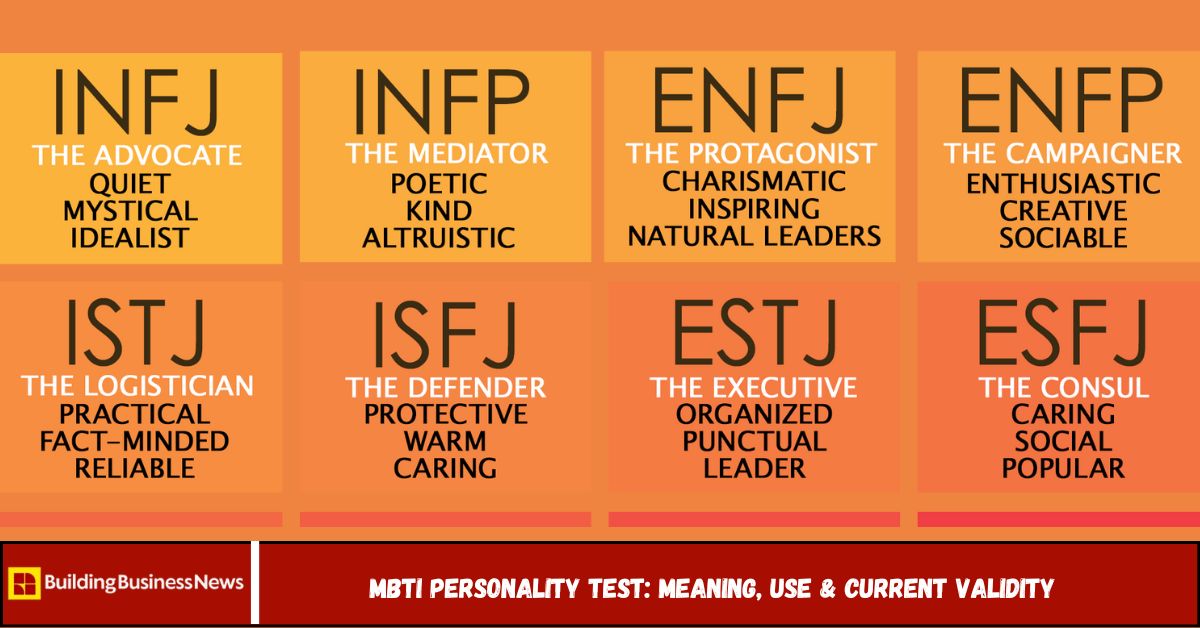What Is MBTI and Is the Myers-Briggs Test Still Valid?
The Myers-Briggs Type Indicator (MBTI) remains one of the most widely used personality assessments in the world. But in an age of advanced psychology and neuroscience, many are asking: Is MBTI still valid today? In this article, we explore what the MBTI really measures, how it’s used, and whether modern research still supports its effectiveness.
“I’ve always known I’m an introvert, but MBTI helped me understand how I work with others.” — a common sentiment shared by millions who’ve taken the Myers-Briggs Type Indicator.
But despite its popularity across workplaces, schools, and social platforms, the MBTI has faced increasing criticism from psychologists and scientists alike. Some argue it lacks scientific rigor, while others swear by its accuracy and usefulness.
So, what exactly is MBTI? And more importantly—is the Myers-Briggs test still valid in 2024 and beyond?
Are you one of the millions who’s taken the Myers-Briggs test and wondered—how accurate is it really? With its widespread use in workplaces, schools, and even dating apps, the MBTI (Myers-Briggs Type Indicator) continues to spark both interest and debate.
This personality assessment promises to reveal how we think, communicate, and make decisions. But what lies beneath its enduring appeal—and does the science back it up?
In this article, we’ll unpack the origins of the MBTI, explore how the test works, and examine its reliability, relevance, and role in modern psychology. Whether you’re a firm believer or a skeptic, it’s time to find out if the MBTI is a helpful tool or an outdated trend.
This article will cover:
- What the MBTI test measures
- How the 16 personality types are defined
- The science (and skepticism) behind its use
- Its relevance today in personal and professional development
What Is the MBTI?
The Myers-Briggs Type Indicator is a self-report questionnaire designed to categorize people into one of 16 personality types. It’s based on the psychological theories of Carl Jung, expanded upon by Isabel Briggs Myers and Katharine Cook Briggs in the 1940s.
The Four MBTI Dichotomies:
Each type is determined by preferences in four key areas:
- Introversion (I) vs. Extraversion (E) – How you gain energy
- Sensing (S) vs. Intuition (N) – How you take in information
- Thinking (T) vs. Feeling (F) – How you make decisions
- Judging (J) vs. Perceiving (P) – How you interact with the world
For example, someone who identifies as INTJ is said to be introverted, intuitive, thinking-oriented, and structured.
Why Is MBTI Still So Popular?
Despite decades of debate, MBTI continues to be used by 89 of Fortune 100 companies and countless individuals worldwide.
Its Ongoing Appeal Includes:
- Simplicity: Easy to understand and apply
- Self-reflection: Encourages awareness of personal preferences
- Workplace application: Used in team building and leadership development
- Non-clinical language: More accessible than traditional psychological diagnoses
Stat: Over 2 million people take the MBTI every year, making it the most widely used personality test globally.
Is the MBTI Scientifically Valid?
Here’s where things get complex.
Criticisms of MBTI:
- Lacks predictive validity: It doesn’t reliably predict job success or long-term behavior.
- Binary choices: People are forced into categories (e.g., introvert or extrovert), ignoring the spectrum.
- Low test-retest reliability: Studies show that up to 50% of users receive a different result after retesting.
Defenses of MBTI:
- Not designed as a clinical tool: It’s meant to describe preferences, not diagnose behavior.
- Useful for self-awareness: Many users find personal and professional value despite criticisms.
Fact: A 2022 study published in Frontiers in Psychology concluded that while MBTI lacks some psychometric strengths, it can be a useful tool for reflective practices when interpreted cautiously.
How MBTI Compares to Other Personality Tests
| Test | Scientific Backing | Use Case | Trait Model |
|---|---|---|---|
| MBTI | Moderate | Career, Self-Awareness | Categorical |
| Big Five (OCEAN) | Strong | Academic, Clinical | Dimensional |
| DISC | Limited | Business, Communication | Behavioral |
The Big Five Personality Traits, often recommended by psychologists, offer a more statistically robust and flexible model, focusing on five spectrums rather than binary types.
Should You Use MBTI in 2024?
Yes—if you understand its limits. MBTI can still be valuable when used as a tool for reflection, not as a rigid label.
Best Use Cases:
- Gaining insight into communication preferences
- Identifying workstyle tendencies
- Facilitating non-judgmental discussions in teams
Avoid Using MBTI For:
- Hiring or firing decisions
- Diagnosing mental health issues
- Predicting future behavior
Conclusion
The MBTI has stood the test of time—not because it’s scientifically flawless, but because it’s accessible, engaging, and encourages self-exploration. While its scientific validity is limited compared to newer models like the Big Five, MBTI remains a valuable tool for personal development when used appropriately.
If you’re seeking a deeper understanding of yourself or your team, MBTI can still play a role—just don’t treat it as psychological gospel.
FAQs
1. What does MBTI stand for?
MBTI stands for Myers-Briggs Type Indicator, a personality assessment tool based on Carl Jung’s psychological theories.
2. How accurate is the MBTI test?
It’s moderately accurate for identifying personality preferences but not scientifically reliable for predicting behavior or job success.
3. Is MBTI better than the Big Five test?
The Big Five has stronger scientific support, but MBTI is more accessible and widely used in non-clinical settings.
4. Can MBTI change over time?
Yes. Up to 50% of people get different results when retaking the test months later.
5. Should companies use MBTI for hiring?
No. MBTI isn’t recommended for hiring decisions due to its lack of predictive validity.
6. Is MBTI still relevant in 2024?
Yes, as a self-awareness and team communication tool—but not as a diagnostic or hiring method.

